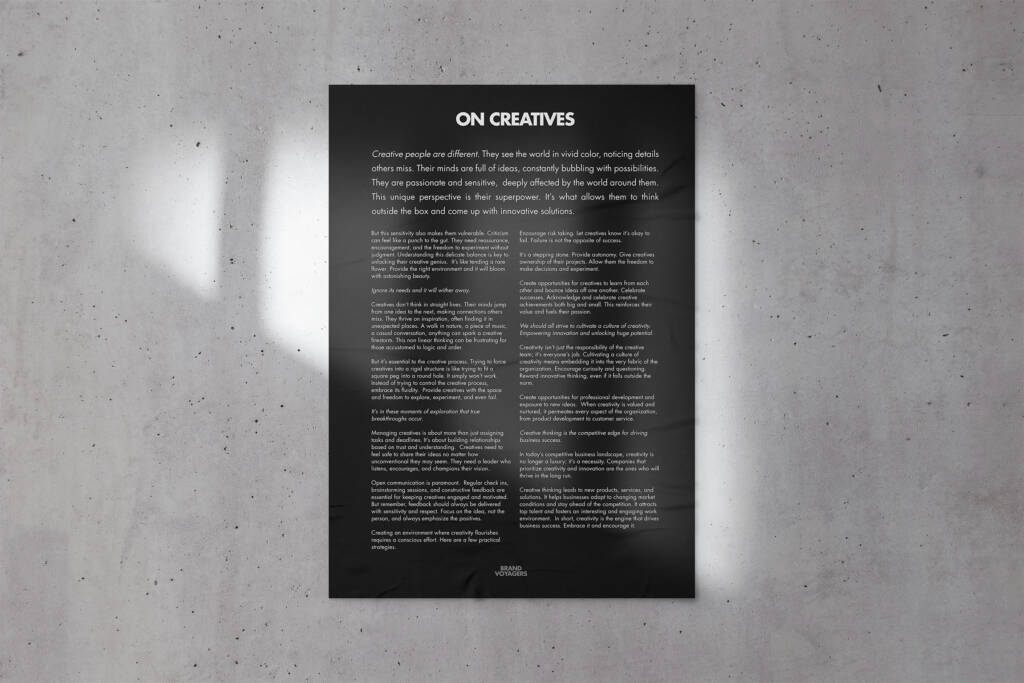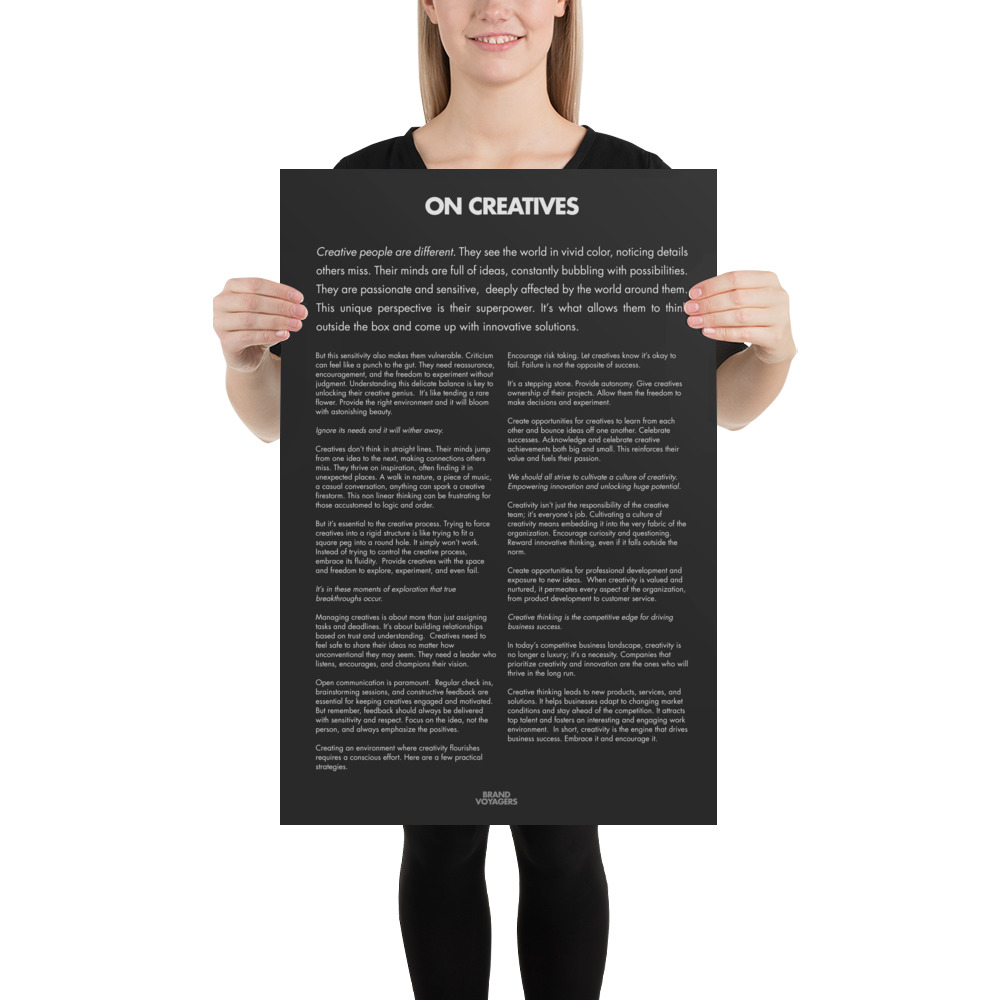|
Getting your Trinity Audio player ready...
|
Creative people are different. They see the world in vivid color, noticing details others miss. Their minds are full of ideas, constantly bubbling with possibilities. They are passionate and sensitive, deeply affected by the world around them. This unique perspective is their superpower. It’s what allows them to think outside the box and come up with innovative solutions.
But this sensitivity also makes them vulnerable. Criticism can feel like a punch to the gut. They need reassurance, encouragement, and the freedom to experiment without judgment. Understanding this delicate balance is key to unlocking their creative genius. It’s like tending a rare flower. Provide the right environment and it will bloom with astonishing beauty.
Ignore its needs and it will wither away.
Creatives don’t think in straight lines. Their minds jump from one idea to the next, making connections others miss. They thrive on inspiration, often finding it in unexpected places. A walk in nature, a piece of music, a casual conversation, anything can spark a creative firestorm. This non linear thinking can be frustrating for those accustomed to logic and order.
But it’s essential to the creative process. Trying to force creatives into a rigid structure is like trying to fit a square peg into a round hole. It simply won’t work. Instead of trying to control the creative process, embrace its fluidity. Provide creatives with the space and freedom to explore, experiment, and even fail.
It’s in these moments of exploration that true breakthroughs occur.
Managing creatives is about more than just assigning tasks and deadlines. It’s about building relationships based on trust and understanding. Creatives need to feel safe to share their ideas no matter how unconventional they may seem. They need a leader who listens, encourages, and champions their vision.
Open communication is paramount. Regular check ins, brainstorming sessions, and constructive feedback are essential for keeping creatives engaged and motivated. But remember, feedback should always be delivered with sensitivity and respect. Focus on the idea, not the person, and always emphasize the positives.
Creating an environment where creativity flourishes requires a conscious effort. Here are a few practical strategies.
Encourage risk taking. Let creatives know it’s okay to fail. Failure is not the opposite of success.
It’s a stepping stone. Provide autonomy. Give creatives ownership of their projects. Allow them the freedom to make decisions and experiment.
Create opportunities for creatives to learn from each other and bounce ideas off one another. Celebrate successes. Acknowledge and celebrate creative achievements both big and small.
This reinforces their value and fuels their passion.
We should all strive to cultivate a culture of creativity. Empowering innovation and unlocking huge potential.
Creativity isn’t just the responsibility of the creative team; it’s everyone’s job. Cultivating a culture of creativity means embedding it into the very fabric of the organization. Encourage curiosity and questioning. Reward innovative thinking, even if it falls outside the norm.
Create opportunities for professional development and exposure to new ideas. When creativity is valued and nurtured, it permeates every aspect of the organization, from product development to customer service.
Creative thinking is the competitive edge for driving business success.
In today’s competitive business landscape, creativity is no longer a luxury; it’s a necessity. Companies that prioritize creativity and innovation are the ones who will thrive in the long run.
Creative thinking leads to new products, services, and solutions. It helps businesses adapt to changing market conditions and stay ahead of the competition. It attracts top talent and fosters an interesting and engaging work environment. In short, creativity is the engine that drives business success. Embrace it and encourage it.
Download the Poster


The On Creatives Manifesto Poster



